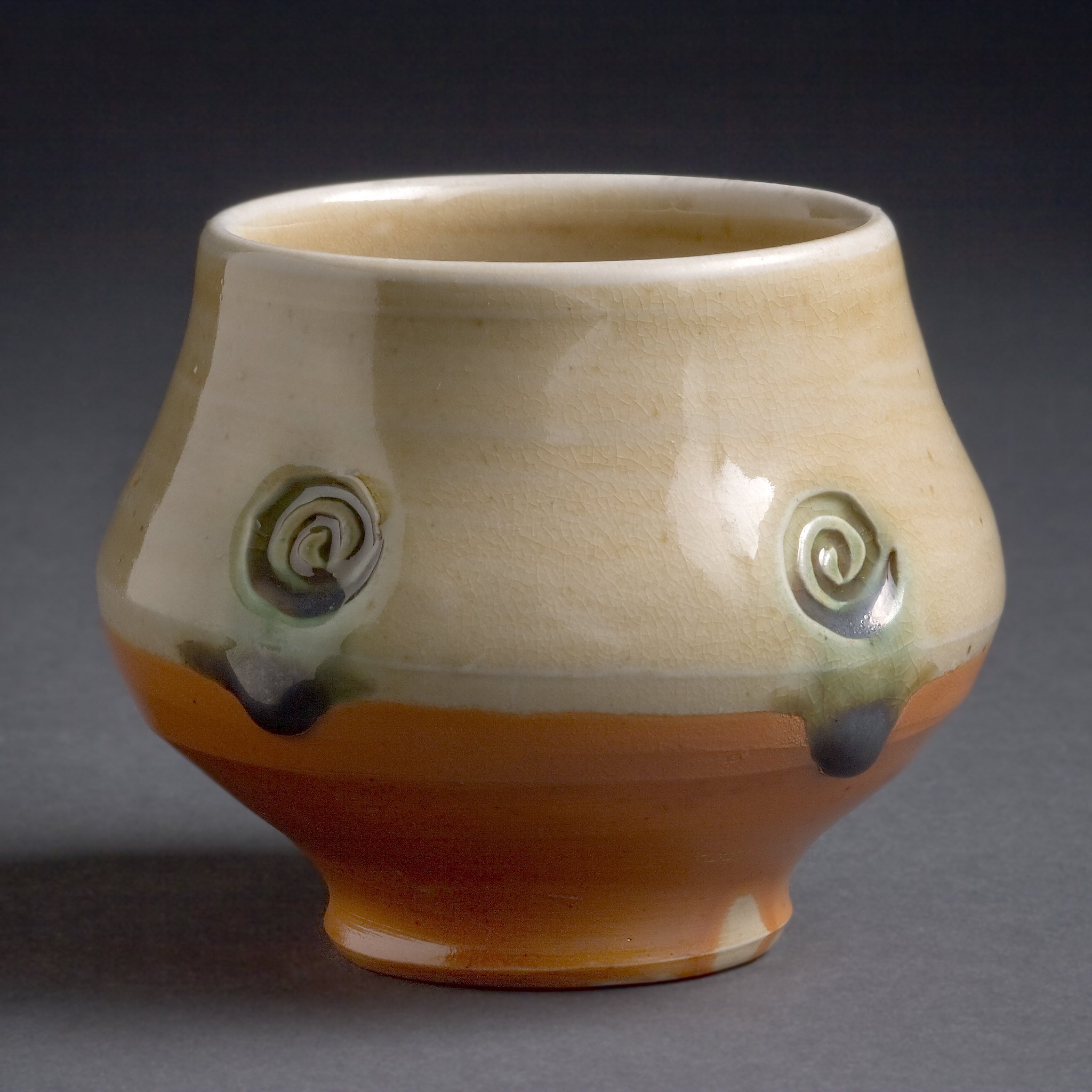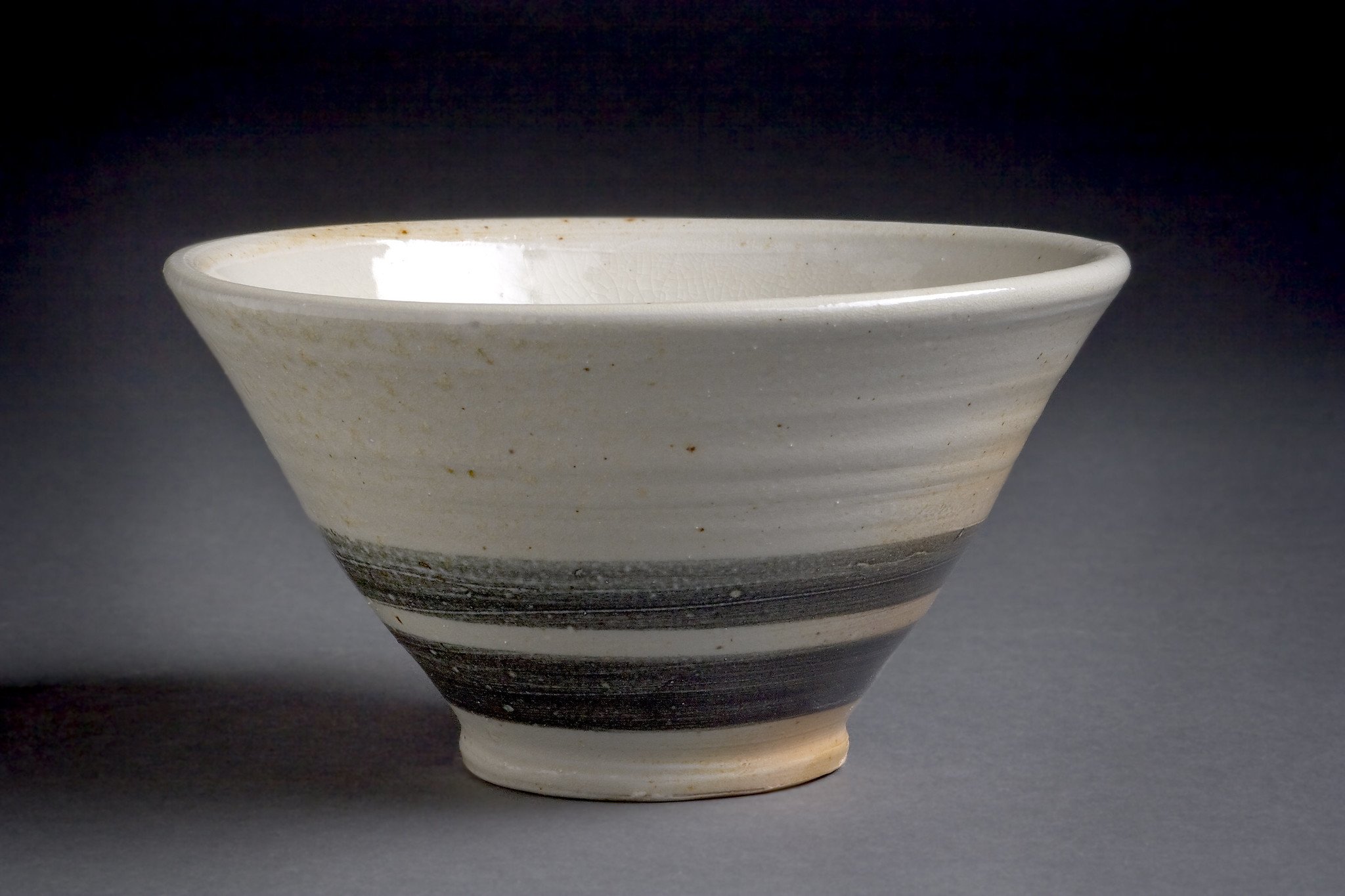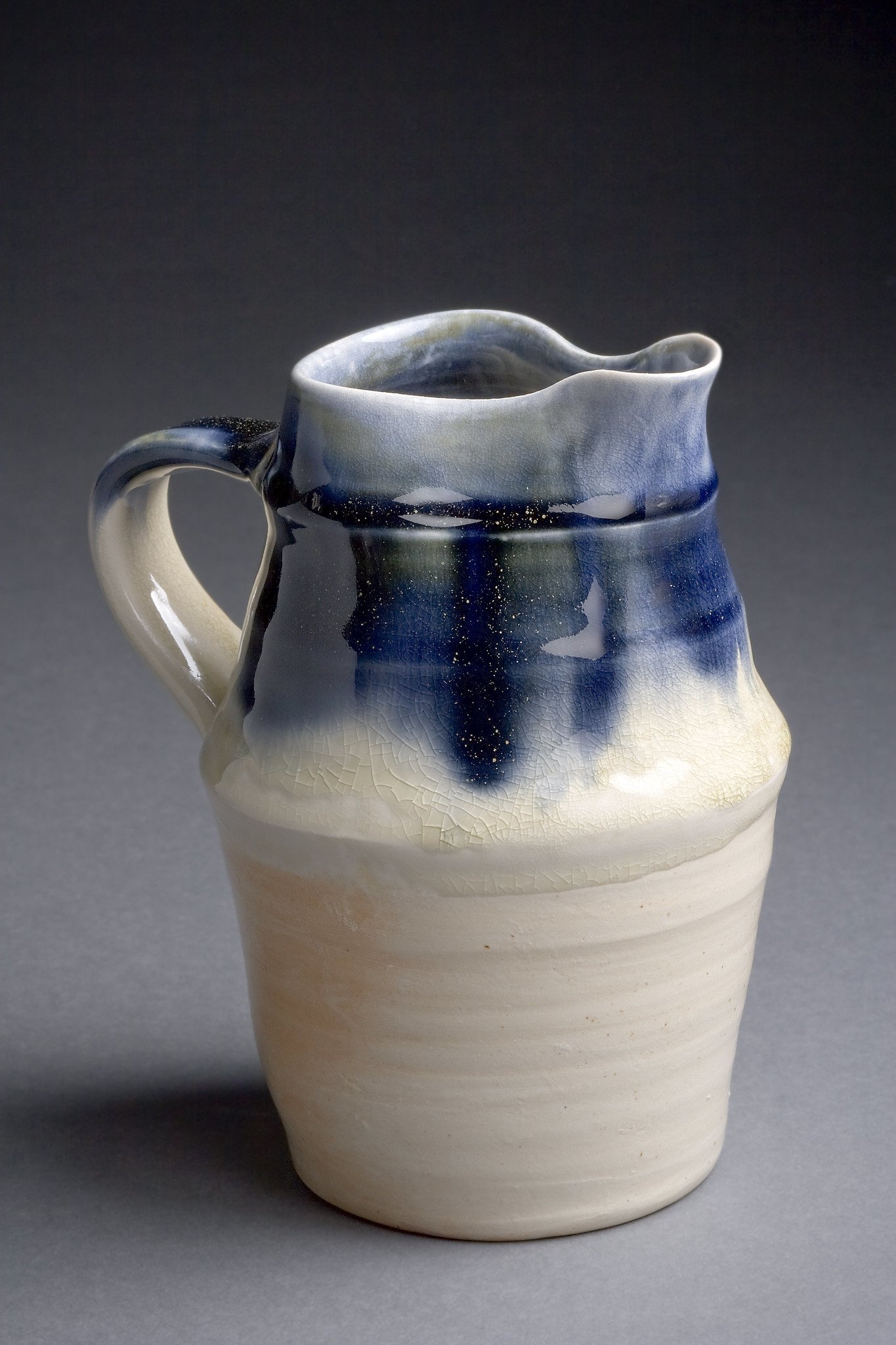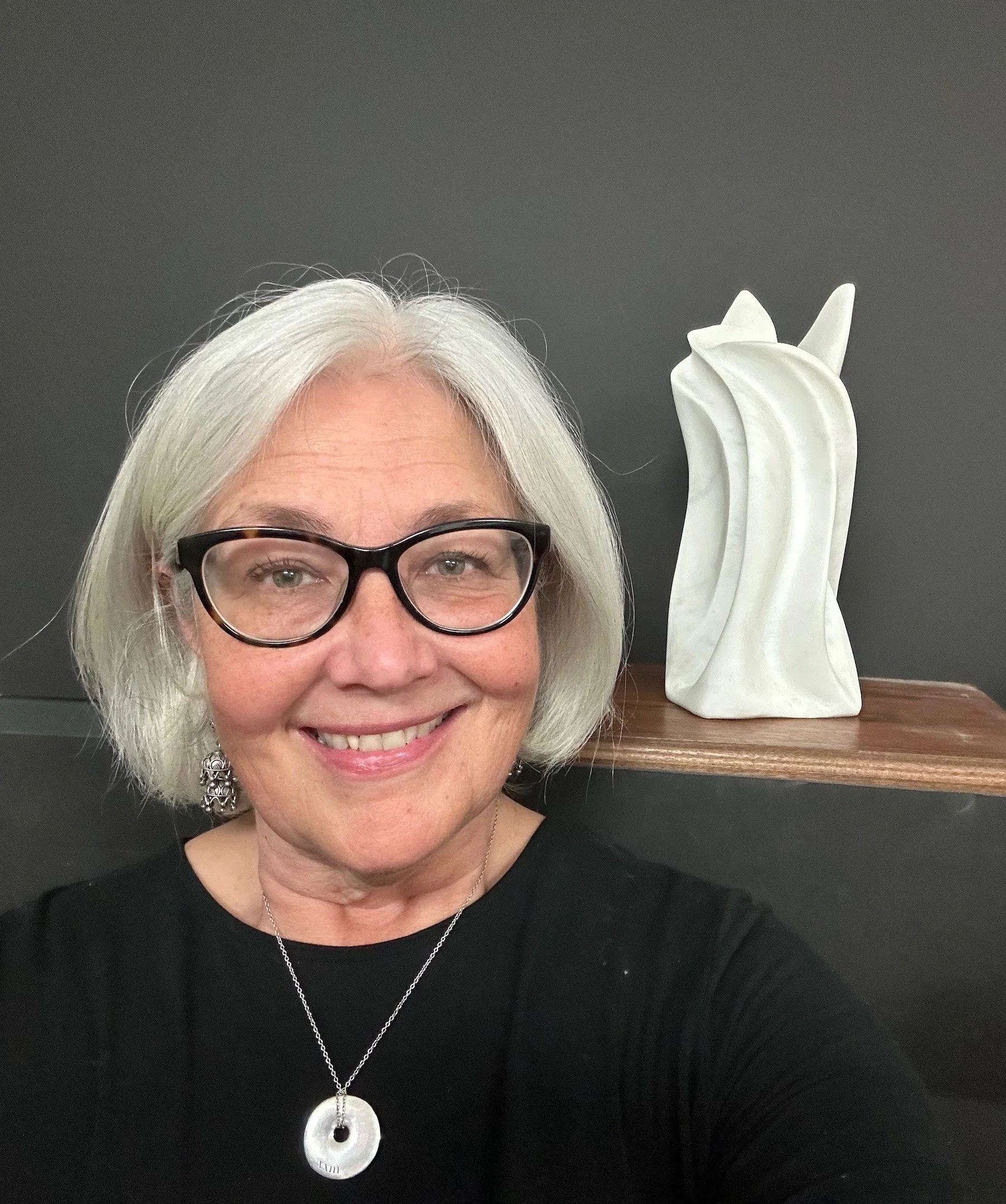Interview with Beth Lambert, Director of the AMFA Windgate Art School
Beth Lambert was born and raised in North Little Rock. After retiring from a 20-year career in writing, marketing, and software engineering she began a career as a studio potter and educator. After a decade of teaching at the Arkansas Arts Center (now the Arkansas Museum of Fine Arts), Hendrix College, and Penland School of Crafts, Beth accepted a position at the AMFA as Ceramic Department Chair and later, Associate Director of the Museum School for 3D programming. She was promoted to Director of the Windgate Art School in May of 2021. (profile photo by Jason Masters, pottery photos by George Chambers, Jr.)
AAS: Beth, you grew up in North Little Rock and are a graduate of Hendrix College, and I think it is safe to say that most of the readers of the Blog know you as a potter. But I believe your practice did not begin until relatively later?
BL: Yes, I guess that’s true. I was an English major at Hendrix, but I took a lot of Art History classes. After Hendrix, I started working at Leisure Arts, first writing craft leaflets and later working on one of the inhouse magazines. From there I worked at Systematics as a technical writer for a while and then managed a writing department for a subsidiary of Blue Cross that no longer exists. I worked as the Marketing Support Manager there for a while, producing supporting materials for tradeshows. Then I got into a training program for programmers at Systematics, which had rebranded as Alltel. I didn’t really consider myself a serious potter until after my work at Alltel ended.
AAS: How did you become aware of the then, Arkansas Arts Center, now the Arkansas Museum of Fine Arts?
BL: It’s something I’ve always been around. It’s been a part of my life since I was a child. My mom recognized my love for art and put me in classes as soon as I was old enough. I remember being in a painting class with Marcel Witkowski and Townsend Wolfe regularly walking through the studios, smoking a big cigar, and complimenting my work. I spent a lot of my childhood there, seeing plays and watching the ballet and movies. As soon as I graduated from college, I signed up for classes right away, I couldn’t wait to be back. I never dreamed I would get to work there someday.
“I remember the childhood smell of the pottery shop at the AAC, which smells kind of like freshly ground pepper to me (really, it’s mold) and when I returned there in my thirties after 20 something years away, it smelled exactly the same and it smelled like home.”
AAS: Where did you learn to be a potter? Who did you learn from?
BL: I remember the childhood smell of the pottery shop at the Arkansas Arts Center [AAC], which smells kind of like freshly ground pepper to me – really, it’s mold. When I returned there in my thirties, after 20 something years away, it smelled exactly the same and it smelled like home. That first clay class as an adult was like getting hit by lightning, and I was hooked. I spent as much time in the studio as I could.
I met potter Fletcher Larkin not too long afterwards; he invited me to help with a kiln he was building. I wanted to make better pots because I was excited about being able to fire in a wood kiln. A few years ago, we bought a house downtown with a big garage and have a studio and four cats together.
I guess the turning point was when potter Clary Illian did a workshop in 2004 at the AAC. She’d written a book about making pots a couple of years earlier that I had read over and over. I couldn’t believe I was going to meet her and the workshop was wonderful. After she left, a friend of hers, who happened to work at the AAC, hinted that she might consider taking me on as an apprentice. I immediately wrote her a letter and then went to visit, took a leave of absence from my job and moved to Iowa for four months – living in a tiny room in the back of her studio and making pots in a space she’d set aside for me.
Working with Clary opened a lot of doors for me and was a huge boost to my confidence. She did a lot of things in clay that few women had done before, and she remains a friend and mentor.
AAS: Before we get more into the Art School, I want to ask you about your pottery. You’ve made both functional and fine art pieces. Tell me about two pieces. The first is a mixed media piece called Skull Box. It is a very mysterious, sculptural piece. The second is one of your face jugs. Is that a specific character?
Skull Box. gut, steel wire, porcelain, 1” x 1” x 2”
Face Jug, wood fired stoneware, 10” x 8” x 8”
BL: The Skull Box is made of stretched gut over steel wire and filled with tiny porcelain skulls. I like to make small objects like this that are curious. I’m also very interested in containment and containers as it applies to functional and nonfunctional objects.
The pots with faces are influenced by some of my favorite medieval pots called Bellarmine pots. The bearded man image is thought to be the mythical wild man of the woods. These were made in Germany and England as drinking vessels or for storage and an early form of political protest against Cardinal Bellarmine (1542-1621). The combination of classical form and stamped decoration is one of my favorite ways to work.
These are older pieces. I am not actively making right now. Pottery making has a rhythm and flow all its own, and I am so focused on the Windgate Art School right now, I don’t have the right energy to devote to it. I don’t feel like me when I’m not making, so I never stopped making other things. I’m a pretty serious knitter and bookbinder and I have stayed busy with that. I call pot making dirty work and everything else is clean work. You just don’t get so filthy knitting.
I did throw some mugs back in December during holiday break and it was exhilarating. I’m looking forward to having more time in the studio soon. I miss that feeling of flow, where time stops – that happens when you are making.






AAS: Who are some your favorite artists working in clay today?
BL: Well Clary, obviously. Her bisqueware is more beautiful than most people’s fired work. I’m really liking what Mike Helke in Minnesota is doing with functional pots and form. The first pot I ever noticed was an oil can sculpture by Dan Anderson in the Arkansas Museum of Fine Arts’ collection. I still love that pot. Dan is retired now but he continues making and inspiring young potters by posting on Instagram. People don’t read as much as they used to. Linda Christianson makes some of my favorite pots and we use them almost every day. And we’ve met a few times and her pots always remind me of her, one of my favorite people. I like the sculptural work Lauren Mabry is doing, pushing glazes to their limits. Sean O’Connell is at Penland now and his work has changed dramatically. I like the new direction a lot, he is inspired by some classic Japanese work that I love.
AAS: Tell me about your experience teaching and what led to your current position as Director of the Windgate Art School at AMFA.
North view of the Arkansas Museum of Fine Arts (photo by Timothy Hursley)
BL: I started teaching clay at the AMFA in 2005 after I got back from Iowa. I taught hand building and later an independent study class. I love the way teaching reinforces your skills and I love the interaction with students. I always felt like I got as much or more out of it than the students did. After 12 years I came on full time as the Department Chair of ceramics and was later promoted to Associate Director over all the three-dimensional classes, including wood, clay, glass, and metal. We started meeting with architects and planning the new building and shortly afterwards, Dr. Victoria Ramirez joined us. Dr. Ramirez made a lot of changes to how the institution was structured and promoted me to Director of the school.
AAS: Tell me about the new Windgate Art School facility and staff instructors.
BL: The newly renovated school is 17,245 square feet compared to the 11,594 feet of the previous iteration. It’s not much bigger but the old studios hadn’t changed much since the sixties. We’ve updated our equipment and have a new studio space dedicated for glass. Fused glass is very popular, and we are adding torch work. Our teaching artists are considered part time staff and we have between 80 and 90. We offer classes and workshops in Ceramics, Drawing, Painting, Printmaking, Metals, Glass, Woodworking, and Performing Arts.
Thanks to generous support from the Windgate Foundation, we were able to upgrade or replace almost all our equipment. They are doing incredible work for the arts in Arkansas.
We are planning some open houses for the studios the week after we open on April 22, 2023. On May 2, 4, 9, & 11 from 1-8pm and Saturdays May 6-June 10 from 1-4pm. Everyone is welcome; there is no registration required. We’re planning a self-guided tour and instructors will be available in all studios to demonstrate and answer questions.
AAS: Will the curriculum generally stay the same as it was before?
BL: We are going to continue with our model of four ten-week quarters a year, however, something new we are doing is offering five-week classes in addition to a few ten-week classes for children and adults. We are continuing our popular Junior Arts Academy program for 6–9-year-olds, and expanding our offerings for children with our new Youth Studio Series, which will have classes for older youth in more areas including clay, metals, wood, glass, and performing arts.
We will also have more weekend workshops starting in the Fall. We have a couple of exciting guest artists planned for this year, including Chakaia Booker and Raven Halfmoon. Both will be conducting workshops in the Art School.
AAS: You are severely hearing impaired. Has it been a challenge to navigate that in your professional career.
BL: I am lucky that I lost most of my hearing gradually, so that I was able to learn to speak. Most people with my hearing chart who are born that way never learn to speak well. I do have a bit of an accent as a result. When I was younger, I never felt like I needed any assistance, and that was a lesson I learned at college, because I hid how hard it was for me by pretending I didn’t care. I didn’t really know how to ask for help. I always told my employers about my hearing loss and it wasn’t an issue until I was about 35. I got into a great training program at Systematics right around Y2K. Once it was over, they put me on a team, half of which was in other states and we met over conference call. The first time I was in a room with the speakerphone, I realized it wasn’t going to work. From there my employer tried to keep me in teams that were local but that got harder and harder. When I went on disability, I was going to make pots for the rest of my life and never go back to a 9-5 job. But then I was spending more time at the AMFA teaching and running the Clay Department, and eventually I went back to working full-time. I had to learn to ask for help and rely on other people and my coworkers at the AMFA have been really helpful.
There are so many accommodations available now that it’s hardly an issue. I use an app called Otter that I learned about from a Democrat-Gazette reporter. It transcribes in real time. I’m also a world class lip-reader and almost everything is closed-captioned now. Before all I had was foreign movies with subtitles.
“As humans we are wired to create. Using your hands to make things promotes mindfulness, concentration, and increases feelings of happiness and accomplishment.”
AAS: I took two pottery and a watercolor class at the Museum School some 20 years ago and it really did help shape my love and appreciation of art – and artists. And there are so many artists I have interviewed who said the Museum School was one of their first exposures to art growing up. So, I love the fact that you are bringing to the School your experiences there as a child. Will the mission of the School stay the same?
BL: This is great to hear! And we want to keep that legacy going in the central Arkansas community of providing a welcoming place for serious students and for those who just want to try art, maybe for the first time. The Windgate Art School continues a 55-year legacy of community arts education in Central Arkansas. I’d like to see the school grow and share this space with as many people as we can. There are a million different reasons for taking art classes and all of them are valid reasons! Studying art teaches us who we are and how to see. Making art teaches us even more. As a culture we are losing our ability to use our hands as tools because all we do anymore is type and tap at screens. As humans we are wired to create. Using your hands to make things promotes mindfulness, concentration, and increases feelings of happiness and accomplishment.
AAS: What do you enjoy most about working at the Museum?
BL: It would have to be the people. I enjoy working with the other staff members. Right now, it feels like we are building something incredible together. We have brought so many new people on in the last couple of years and working with them and getting to know them has been a wonderful experience. Before we moved to Riverdale, I didn’t know a lot of people outside my area but putting us all together in that building brought us together in a way we hadn’t been before.
Looking towards the grand opening, I am excited to be able to visit the galleries again. That has been the hardest thing about being closed this long, well, that and not getting to see students and faculty every day.
The thing I love the most about working in the Art School is giving back to the community. This place has changed almost every aspect of my life for the better, and I really believe that art saves lives. To be able to share that with the many students I’ve had over the years has been a privilege.


